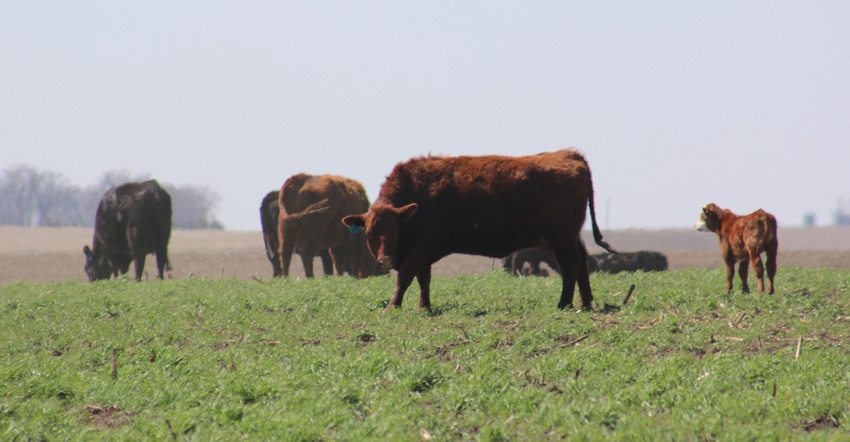August 27, 2020

USDA’s Farm Service Agency has released Conservation Reserve Program acres for emergency haying and grazing in 24 counties in western Iowa. Drought conditions this summer prompted the release. Using this additional forage resource provides producers with opportunities as well as challenges.
Erika Lundy, Iowa State University Extension beef specialist, provides the following considerations to think through when deciding how to use the forage:
Forage quality. At best, forage quality of CRP acres harvested this late in the year (mid-August or later) is comparable to cornstalks. Quality is determined by the last time the acres were hayed or grazed, the CRP program, and forage species present.
Additionally, plants have been stressed this summer due to lack of moisture and, therefore, are more mature than normal. Previous samples of CRP forage have demonstrated crude protein values as low as 2% to as high as 8%, and energy values are frequently below 50% total digestible nutrients.
Feeding considerations. Due to the low forage quality, it’s important to get a nutrient analysis on the forage resource to know what you are working with. Regardless of stage of production or class of cattle, additional energy and protein supplementation will be necessary to meet gestating cow or fed cattle nutritional requirements.
Be aware of unwanted products and debris (cans, shotgun shells, old fencing, garbage, etc.) that may be present. To decrease the risk, avoid harvesting acres immediately alongside the ditch, fence line or roadway.
Weed presence. Pay attention to weed presence and make sure you know if there are any toxicities associated with that weed. CRP acres tend to contain a large number of weeds or other forages, and seed heads that are not desired in pastures, hay fields or even crop fields. Carefully consider your feeding areas when using CRP hay to reduce the area where new weeds are being introduced through seed dispersal of the hay or manure deposition or spreading. With drought-stressed forages, bare ground will increase the likelihood of weeds next spring.
Water sources. If grazing CRP acres, carefully evaluate water sources. Many ponds in western Iowa have experienced prolonged periods of hot temperatures and minimal influx of new water, which is the perfect environment for algae blooms. Watch for blue-green algae, or cyanobacteria, a major health risk for cattle. Use caution when hauling water to cows. Avoid using liquid fertilizer tanks to haul water, as the tanks can’t be cleaned out well enough to prevent nitrate poisoning.
If you have questions regarding forage sampling or using CRP forages in beef cattle diets, contact your ISU extension beef specialist. For additional resources dealing with drought, visit the Iowa Beef Center.
Source: IBC, which is solely responsible for the information provided and is wholly owned by the source. Informa Business Media and all its subsidiaries are not responsible for any of the content contained in this information asset.
You May Also Like




